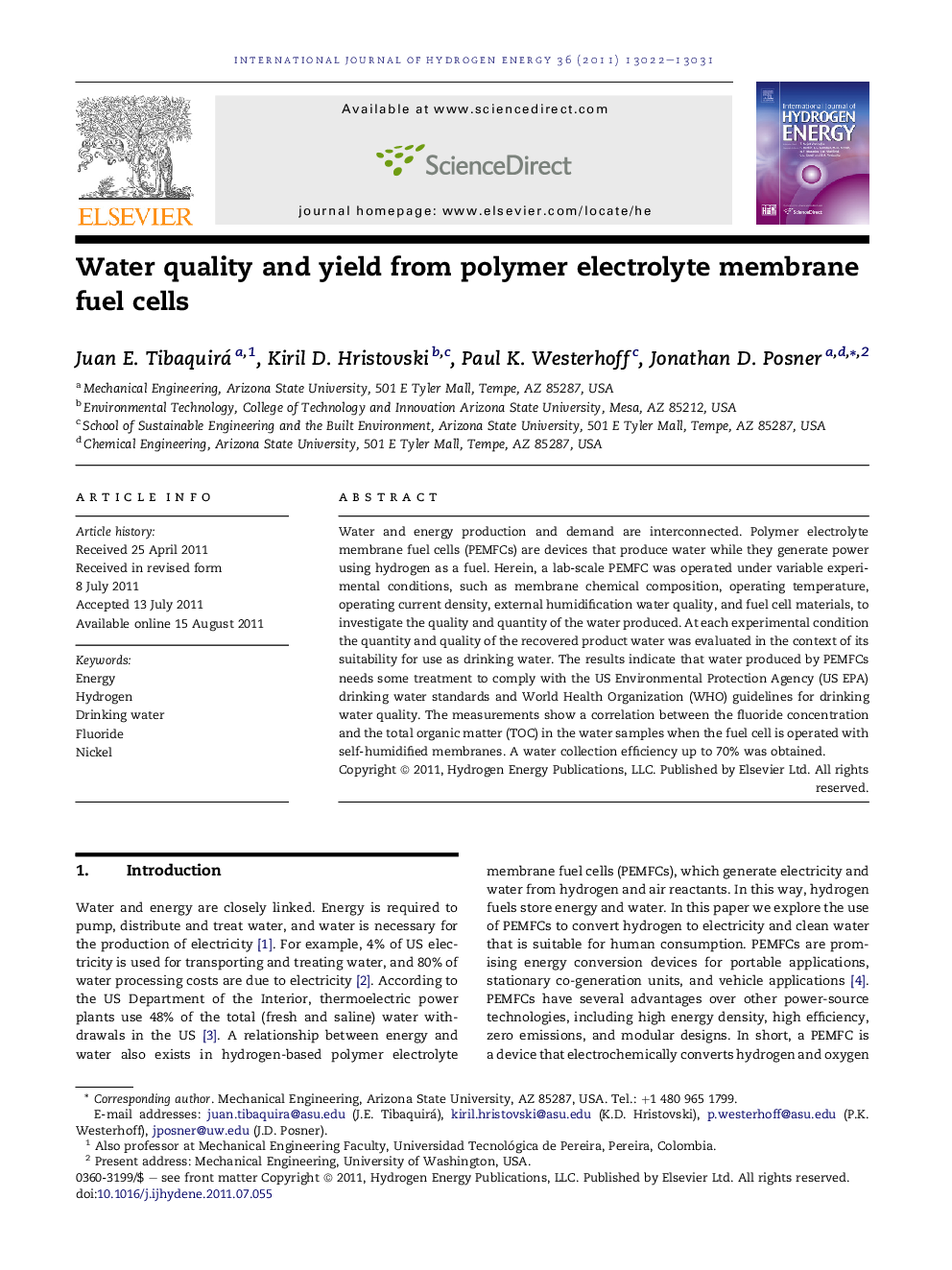| Article ID | Journal | Published Year | Pages | File Type |
|---|---|---|---|---|
| 1271967 | International Journal of Hydrogen Energy | 2011 | 10 Pages |
Water and energy production and demand are interconnected. Polymer electrolyte membrane fuel cells (PEMFCs) are devices that produce water while they generate power using hydrogen as a fuel. Herein, a lab-scale PEMFC was operated under variable experimental conditions, such as membrane chemical composition, operating temperature, operating current density, external humidification water quality, and fuel cell materials, to investigate the quality and quantity of the water produced. At each experimental condition the quantity and quality of the recovered product water was evaluated in the context of its suitability for use as drinking water. The results indicate that water produced by PEMFCs needs some treatment to comply with the US Environmental Protection Agency (US EPA) drinking water standards and World Health Organization (WHO) guidelines for drinking water quality. The measurements show a correlation between the fluoride concentration and the total organic matter (TOC) in the water samples when the fuel cell is operated with self-humidified membranes. A water collection efficiency up to 70% was obtained.
► Water from a PEM fuel cell meets nearly all the organic chemical requirements for drinking water. ► There is a correlation between the fluoride and the organic matter in the water samples. ► Membrane N-212 showed to be more durable than membrane N-111. ► A water collection efficiency up to 70% was obtained.
